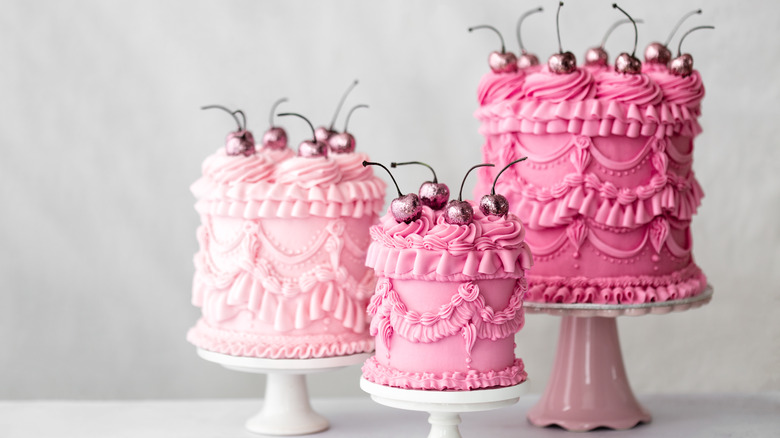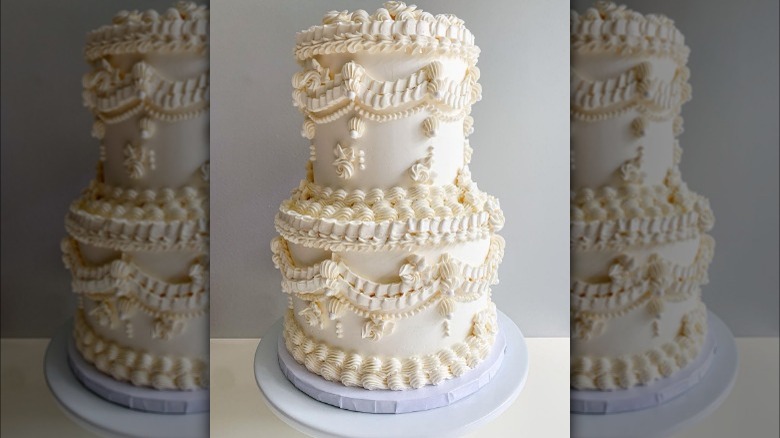The Ornate Victorian Cake Decoration Style Called Lambeth Piping
Have you ever thought that a wedding cake looks an awful lot like the architecture of a Victorian house? Or that the architecture of a Victorian house looks an awful lot like a fancy wedding cake? Well, those two things aren't as far apart as they may immediately seem. A type of cake decorating that became popular in Europe during the 19th century mimicked the decorative style seen in architecture and interiors of the time (per Southern Living).
This style is today called either Lambeth piping, or simply Victorian piping and you probably think of it as the quintessential wedding cake look. The style is composed of piping layers of intricate designs over each other in a fashion called over-piping to form baroque three-dimensional designs (per American Cake Decorating). So where does the name Lambeth come from? The decorating technique takes its name from American cake decorator Joseph Lambeth whose 1934 book "The Lambeth Method of Cake Decoration & Practical Pastries" touted the style (per Cake Geek).
Maximalism makes a comeback
Despite its antique status, this style was named one of the top cake trends of 2022 by American Cake Decorating Magazine. Call it a reaction to minimalism. Maximalism is making a comeback in a big way with cakes this season. But these classic wedding cakes are being made slightly differently than they were 150 years ago.
Traditionally, Lambeth or Victorian piping was done using a royal icing recipe (per Southern Living). Royal icing is great for this kind of super-detailed decoration because it dries hard and holds its shape beautifully (per Serious Eats & The Spruce Eats). You may know it as the stuff that holds together a gingerbread house. However, as Atlanta bakery Bakey Bakes owner Larissa Neto points out to Southern Living, "I imagine a mouth full of royal icing is pretty unpleasant as it is rock hard when dry." Neto adds that the stiff white icing is still used for "more intricate and thinner Lambeth cakes." Bakeries today tend to use the softer but infinitely more palate-pleasing buttercream frosting to form the arches, swags, and lacework that make up Lambeth designs.
For those interested in giving this antique trend a go at home, Craftsy recommends practicing piping your design first before piping it onto your cake. Some motifs for inspiration include shells, strands of pearls, and symmetrical designs.

